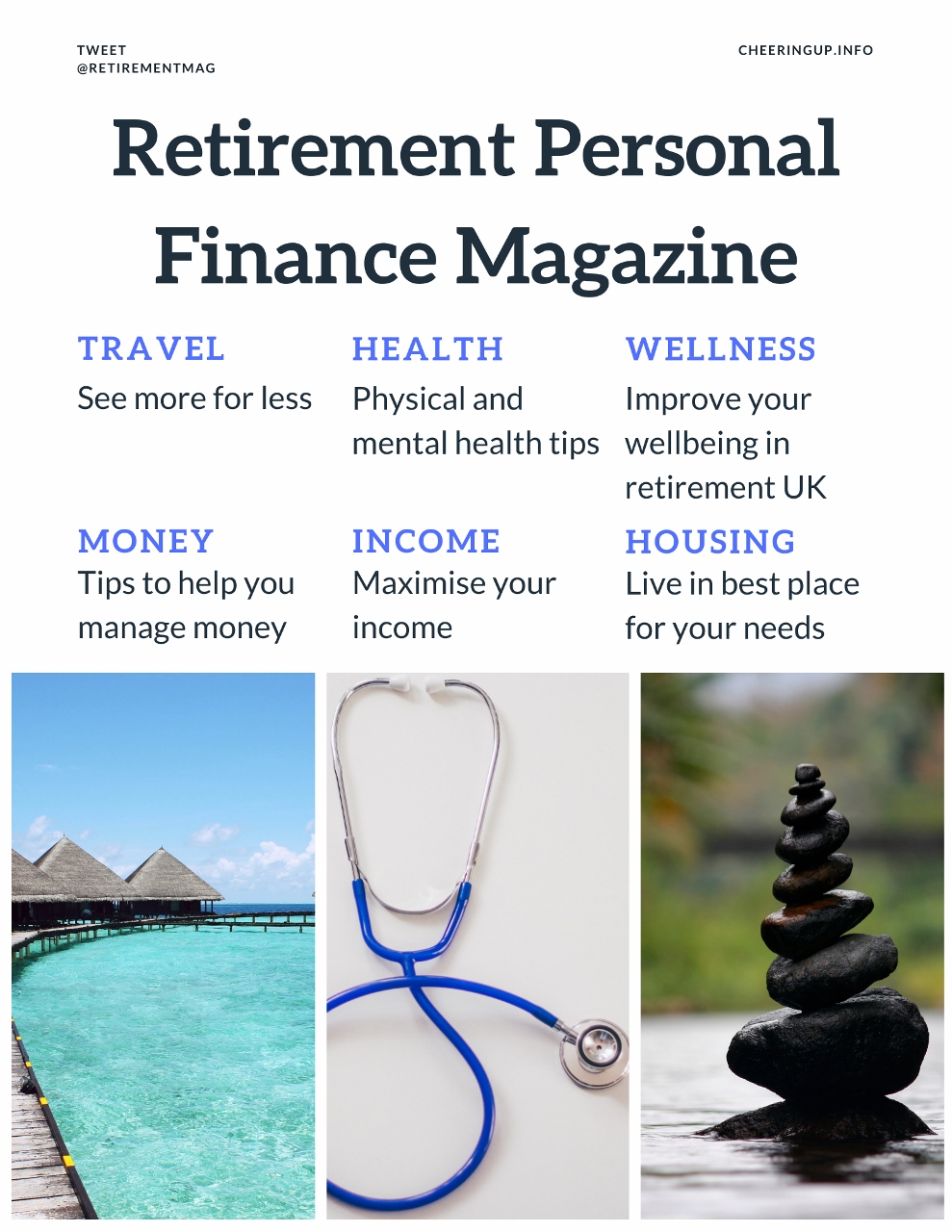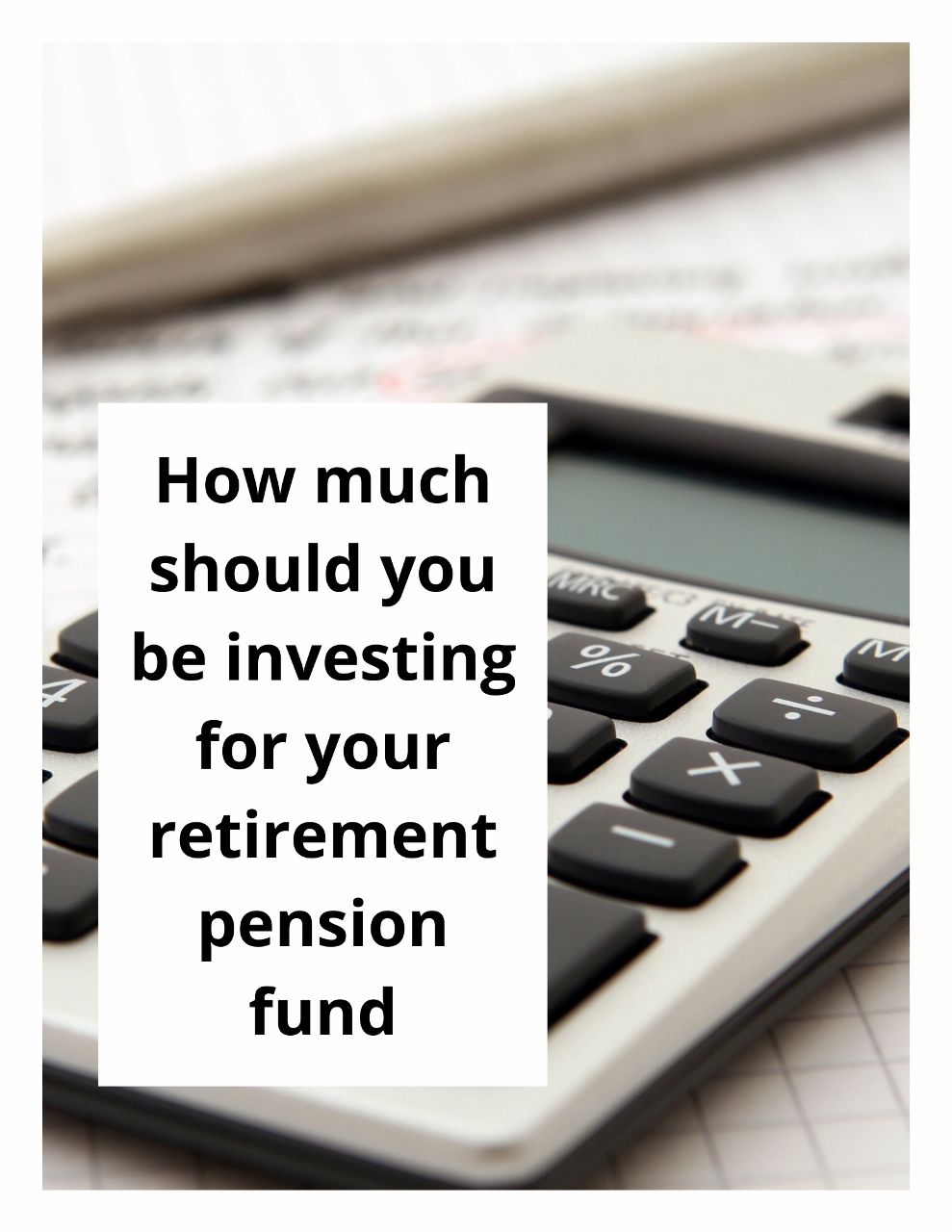The Property Millionaire’s Retirement Blueprint: How to Build a Tax-Efficient Buy-to-Let Empire Using Limited Companies
For UK Investors 55+: Beat inflation & build lasting wealth with buy-to-lets in limited companies! This eBook reveals:
✅ Step-by-Step SPV Setup – Legally save £12K+/year vs personal ownership
✅ 5-Year Plan to scale from 2 to 10+ properties (case study: £9,200/month income)
✅ Mortgage Hacks – How lenders approve new companies
✅ Tax Loopholes – Holiday lets, pension dumps & trivial benefits
📊 Includes: Checklists, lender tables & real investor case studies
There’s a way to grow your wealth tax-efficiently – using property limited companies
Perfect for: Cash-rich retirees, SIPPs diversifiers & side-hustlers
Buy at Limited Launch Price!
👉 Contact Us For More Information on Retirement Lifestyle Improvement UK
#PropertyInvesting #RetirementPlanning #BTLInvesting #TaxEfficiency
The Retirement Time Bomb – And How to Defuse It
Imagine this: You’re 55, sitting on a £500,000 cash pile. Comfortable? For now. But at 3% inflation, in 20 years, that money will be worth just £276,000 in today’s terms. Worse, if you’re drawing £30,000 a year from savings, you’ll run out of money before you hit 80.
Scary? It should be.
But here’s the good news: There’s a way to turn that cash into a growing, inflation-proof income stream that lasts the rest of your life—without gambling on stocks or praying for pension reforms.
The solution? Property. Mortgages. Limited companies.
This isn’t about getting rich quick. It’s about building a retirement machine—one that pays you more as rents rise, more as properties appreciate, and more as tax-efficient profits stack up inside a company structure.
In this guide, you’ll get a step-by-step playbook for:
- Setting up the right limited company structure (one vs. multiple companies—and why it matters).
- Securing mortgages inside that company (even if you’ve never run a business before).
- Buying properties that work for your retirement (not just “any” buy-to-lets).
- Extracting profits in the most tax-efficient way (legally paying less to HMRC).
- Scaling to 5, 10, or 20 properties without drowning in admin.
We’ll use real case studies—like the 62-year-old who turned £250K into £1.2M of property equity in 7 years, now paying him £4,500/month after tax. No fluff. No jargon. Just actionable strategies that work in today’s market.
Ready? Let’s build your retirement fortress—one brick (and mortgage) at a time.
“At 3% inflation, £500,000 today is worth just £276,000 in 20 years—enough to last most retirees only 12 years at £30,000/year withdrawals.”
Chapter 1: The Retirement Cash Trap
John and Sheila thought they’d nailed retirement. £750,000 in savings. A paid-off house. Dreams of cruises and grandkids.
Then reality hit.
After 10 years of 2.5% interest and £36,000/year withdrawals, their pot had shrunk to £390,000. Worse, inflation meant that £36,000 now bought what £28,000 did a decade earlier.
“We never imagined running out,” John admitted. “But at this rate, we’ll be broke by 78.“
The culprit? Cash is a terrible long-term asset.
Here’s what works instead…
CHAPTER 1: THE RETIREMENT CASH TRAP – WHY PROPERTY BEATS PENSIONS & SAVINGS
The Silent Crisis: Your Money is Disappearing
But here’s the brutal truth—your money is melting away faster than you think.
At just 3% inflation, that £500,000 will be worth only £276,000 in today’s money in 20 years. If you withdraw £30,000 a year to live on? You’ll run out before your 80th birthday.
And that’s before factoring in unexpected costs—care home fees, medical bills, or helping your kids onto the property ladder.
Pensions Are a Gamble
The stock market swings wildly. A 20% crash just before retirement could slash your income forever.
Case Study: David, 62, saw his £400,000 pension pot drop to £320,000 in 2022. He now gets £1,200 less per month than planned.
Cash Savings Lose Value Every Year
Even “high-interest” accounts pay less than inflation. Your money is guaranteed to buy less over time.
- Example: £100,000 at 2% interest = £148,595 in 20 years. But at 3% inflation, it’s really worth just £82,000 in today’s terms.
Bonds & ISAs Can’t Keep Up
The best 5-year fixed-rate bonds pay ~5%. After tax and inflation? Barely breaking even.
Why Property Wins (The Math Doesn’t Lie)
| Investment | Avg. Annual Return | Key Risk |
|---|---|---|
| Savings Account | 1-3% (pre-tax) | Loses to inflation |
| S&P 500 (Stocks) | 7-10% (volatile) | Market crashes hurt |
| UK Buy-to-Let* | 12-15% | Tenant voids (manageable) |
*Assumes 5% rental yield + 5% appreciation + 2-5% mortgage leverage.
The Triple Advantage of Property:
- Rental Income – Inflation-proof cash flow (rents rise with costs).
- Capital Growth – Property doubles every 10-15 years historically.
- Leverage – A £200,000 house with a 75% mortgage only ties up £50,000 of your cash.
The Pension vs. Property Showdown
Scenario: You have £250,000 to invest at age 55.
- Pension Route:
- Draw 4% per year = £10,000/year.
- After 20 years? Pot likely depleted.
- Property Route (Limited Company):
- Buy 4 x £200,000 houses (25% deposit each).
- Rent: £800/month each = £38,400/year gross.
- After mortgage costs & tax: £18,000+/year profit.
- Plus the properties now worth ~£1,000,000.
The Psychological Edge
Unlike stocks, property is:
- Tangible – You can see and improve it.
- Control – Raise rents, refinance, or sell on your timeline.
- Predictable – Tenants pay rent like clockwork with proper vetting.
Your First Action Step
Do this today:
- Open a spreadsheet.
- List your current savings/pensions.
- Calculate their real value in 10 years (subtract 3% inflation yearly).
The gap between that number and the income you’ll need? That’s why you need property.
Next Chapter Preview:
“Why a Limited Company? (And When It’s Not the Right Choice)”
- The £12,000/year tax loophole HMRC doesn’t advertise.
- The one scenario where owning property personally still beats a company.
CHAPTER 2: WHY A LIMITED COMPANY? (AND WHEN IT’S NOT THE RIGHT CHOICE)
The £12,000 Tax Loophole Every Property Investor Should Know
Let me tell you about Sarah, a 58-year-old dentist from Manchester. She owned three buy-to-lets personally, earning £36,000/year in rent. After income tax at 40% and mortgage interest deductions, she kept just £19,000. Then she switched to a limited company structure – and legally paid £12,000 less in tax that first year.
This is why smart investors are flocking to limited companies. But it’s not right for everyone. Let’s break it down.
The Tax Tsunami Hitting Personal Landlords
Since 2017, three changes have crushed personal landlords:
- Mortgage interest tax relief phased out (now just a 20% credit)
- Section 24 rules making rental income look artificially high
- Capital Gains Tax still at 18-28% when you sell
For higher-rate taxpayers, this is brutal. But limited companies get:
✔ Full mortgage interest deduction
✔ Corporation Tax at just 25% (vs 40-45% income tax)
✔ 19% tax on capital gains (vs 28% personally)
The Numbers Don’t Lie: Company vs Personal
Let’s compare £50,000 rental profit:
| Personal (40% taxpayer) | Limited Company | |
|---|---|---|
| Tax Rate | 40% | 25% |
| Mortgage Interest (30k) | Only 20% relief | Full deduction |
| Net Tax Bill | £20,000 | £8,000 |
| Annual Savings | – | £12,000 |
When a Limited Company Doesn’t Make Sense
- The One-Property Wonder
If you own just one £150,000 flat making £7,500/year rent? The £500 company accounts cost might outweigh savings. - Basic Rate Taxpayers
Earning under £50,270? Your 20% tax rate is close to Corporation Tax – less benefit. - Planning to Sell Soon
Companies pay 19% on gains, but extracting cash later may trigger dividend tax. Personal CGT allowance (£3,000) can sometimes work better.
The Hidden Costs Nobody Talks About
- Accountancy fees (£800-£1,500/year vs £300 personally)
- Mortgage rates 0.5-1% higher than personal BTLs
- More complex tax returns (CT600, confirmation statements)
Case Study: The Semi-Retired Couple Who Got It Wrong
Mike and Jenny transferred their £1.2m portfolio into a company… then discovered:
✖ Their 0.5% personal BTL mortgages became 2.5% company loans
✖ £3,500/year in new accounting/legal fees
✖ No CGT exemption on transfer
They actually lost money for three years. The lesson? Transition gradually.
Your 3-Step Action Plan
- Calculate Your Tipping Point
Use this formula:
(Current Tax Rate – 25%) × Rental Profit = Annual Savings
If savings exceed £1,500 (typical company costs), switch. - Test With One Property First
Transfer just one property to test the waters. Use “incorporation relief” to defer CGT. - Interview Specialist Accountants
Ask:
- “How many property clients do you have?”
- “Can you show me a sample CT600 for rentals?”
- “What’s your process for profit extraction?”
The Ultimate Hack: Mixed Ownership
Sophisticated investors use both:
- Keep low-yield properties personally (to use CGT allowance)
- Put high-mortgage properties in companies (maximize interest relief)
Coming in Chapter 3…
“One Company or Multiple? The Mortgage & Tax Trade-Off”
- Why some investors create a “lender-friendly” structure with 4 properties per company
- How to split portfolios to avoid hitting the £250,000 profits threshold
CHAPTER 3: ONE COMPANY OR MULTIPLE? THE MORTGAGE & TAX TRADEOFF
The Million-Pound Question: Single SPV or Multiple Companies?
Meet two investors:
- David put all 8 properties in one limited company. Simple. Until lenders said “no more mortgages” at property #5.
- Sarah set up two companies with 4 properties each. She just got her 9th mortgage approved last week.
Who made the right call?
The answer isn’t one-size-fits-all—it depends on tax, lending risk, and your endgame. Let’s break it down.
SECTION 1: THE LENDER’S PERSPECTIVE (WHY TOO MANY PROPERTIES = MORTGAGE REJECTIONS)
The “4-Property Rule” Most Investors Miss
Many high-street lenders impose hidden limits per company:
- Santander: Max 3-4 BTL mortgages per SPV
- Paragon: Up to 10, but rates rise after 5
- High Street Banks: Often reject after 2-3
Why? Risk concentration. If one tenant stops paying, it could domino across all properties in that company.
➡ Solution: Spread properties across multiple SPVs (Special Purpose Vehicles) to keep lenders happy.
Case Study: The Investor Who Hit a Brick Wall
James had 6 properties in one company. At property #7, every lender declined him. He had to:
- Spend £1,200 setting up a new company
- Wait 6 months to build its credit file
- Accept higher interest rates (2.1% → 2.8%)
Cost of mistake: £16,000 in lost rent over 6 months + higher lifetime mortgage costs.
SECTION 2: THE TAX TRIGGERS (WHEN ONE COMPANY COSTS YOU THOUSANDS)
The £250,000 Profit Threshold
- Below £250,000 profits: 19% Corporation Tax (2025 rate)
- Above £250,000: 25% Corporation Tax
Example:
- Single company with £300,000 profit: Entire sum taxed at 25% = £75,000 tax bill
- Two companies splitting £150,000 each: Both taxed at 19% = £57,000 total tax
Savings: £18,000/year
The £500,000 “Associated Companies” Trap
HMRC links companies under common control. If total profits exceed £500,000 across all companies, each one loses the 19% rate.
➡ Strategy: Keep each company’s profits under £250,000, and total under £500,000.
SECTION 3: THE GOLDILOCKS STRUCTURE (HOW MANY COMPANIES SHOULD YOU HAVE?)
| Portfolio Size | Optimal Structure | Why? |
|---|---|---|
| 1-3 properties | 1 company | Not worth the complexity |
| 4-8 properties | 2 companies (4 each) | Avoids lender limits; keeps profits under £250k each |
| 10+ properties | 1 per 4 properties | Maximizes mortgage options; isolates risk (e.g., one company has voids) |
Pro Tip: Name companies strategically (e.g., “Smith Properties 1 Ltd”, “Smith Properties 2 Ltd”) to streamline banking.
SECTION 4: THE HIDDEN COSTS OF MULTIPLE COMPANIES
- Accounting Fees: £800-£1,200 per company/year
- Mortgage Complexity: Different rates/terms across lenders
- Time Drain: Separate bookkeeping, tax filings, and bank logins
When Multiple Companies Don’t Pay Off:
- If your total profits are under £100,000
- If you hate admin (each company = 5+ extra hours/month)
YOUR ACTION PLAN: 5 STEPS TO DECIDE
- Project Your Profits
- Estimate rental income minus expenses for the next 5 years.
- Will any single company exceed £250,000 profits? If yes, split early.
- Talk to a Mortgage Broker
Ask: “At what point will lenders block my current structure?” - Run the Tax Math
Compare:
- Single company tax bill
- Split-company tax bill (use an online CT calculator)
- Future-Proof Your Setup
- Leave “room” in each company (e.g., don’t max out at 4 properties if expanding soon).
- Set up companies before you need them (older companies get better mortgage rates).
- Consider a Hybrid Approach
- Keep low-risk properties (e.g., long-term tenants) in one company
- Put higher-risk/higher-growth properties in separate entities
COMING IN CHAPTER 4…
“Step-by-Step: Setting Up Your Property Company (In Under 7 Days)”
- The exact Companies House forms to file (and the one mistake that delays approvals)
- How to open a lender-friendly business bank account without a trading history
CHAPTER 4: STEP-BY-STEP – SETTING UP YOUR PROPERTY COMPANY IN UNDER 7 DAYS
The 72-Hour Company Setup Challenge
Mark, a 56-year-old teacher, thought setting up a property company would take weeks of paperwork. He nearly paid £1,200 to a solicitor to handle it.
Then he discovered the DIY route – done correctly, it took him:
- 17 minutes to register with Companies House
- 48 hours to get his company number
- 6 days to complete everything (including bank account)
Here’s exactly how to replicate this – with insider shortcuts most accountants won’t tell you.
STEP 1: CHOOSING YOUR COMPANY STRUCTURE (CRUCIAL DECISIONS IN 10 MINUTES)
Option A: Standard Limited Company (Ltd)
- Best for: Most buy-to-let investors
- Pros:
- Simple to set up
- Limited liability
- Tax-deductible expenses
- Cons:
- Must file public accounts
Option B: Special Purpose Vehicle (SPV)
- Best for: Investors using mortgages
- Pros:
- Lenders prefer it (lower risk)
- Clear property-focused SIC codes
- Cons:
- Slightly more complex to explain to banks
Pro Tip: Use these SIC codes (what lenders want to see):
- 68100 (Buying/selling own real estate)
- 68209 (Other letting of real estate)
Avoid 68201 (Renting operating space) – some lenders reject this.
STEP 2: REGISTERING WITH COMPANIES HOUSE (DONE IN 17 MINUTES)
What You’ll Need:
- Proposed company name (have 2-3 backups)
- Director’s details (name, DOB, address)
- £12 credit card
The Registration Hack:
- Go to the Companies House Web Incorporation Service
- Select “Incorporate a private company limited by shares”
- Use “Model Articles” (don’t pay for custom ones)
- Skip adding shareholders initially (you can add later)
Critical Mistake to Avoid:
- Listing your home address as the registered office (it becomes public). Instead:
- Use your accountant’s address, or
- Pay £39/year for a virtual office (e.g., Regus)
STEP 3: OPENING A LENDER-FRIENDARY BUSINESS BANK ACCOUNT
The 3 Best Banks for New Property Companies:
| Bank | Time to Open | Key Requirement | Best For |
|---|---|---|---|
| Tide | 1-2 days | No trading history needed | Fast setup |
| Starling | 3-5 days | Must be UK resident | Best app/API |
| HSBC | 7-10 days | £25k+ deposit | High-street credibility |
Pro Tip: Apply to two banks simultaneously in case one rejects you.
STEP 4: SETTING UP YOUR ACCOUNTING (AVOIDING THE £5,000 MISTAKE)
Must-Have Systems:
- Digital Bookkeeping (Free Option: Wave Apps)
- Track income/expenses from Day 1
- Separate Business Card
- Never mix personal/property spending
- VAT Decision
- Most BTL companies don’t need to register (unless opting for FRS)
Case Study: The Landlord Who Lost £5,000
- Didn’t track mileage to view properties
- Missed £2,400 in allowable expenses
- Paid £600 fines for late filings
STEP 5: GETTING YOUR FIRST MORTGAGE APPROVAL
The “New Company” Mortgage Hack:
- Wait 3 Months (Some lenders require this)
- Use a Specialist Broker (Free Option: L&C Mortgages)
- Prepare:
- 3 Months of Business Bank Statements
- Personal SA302s (last 2 years)
- CV Showing Property Experience
Best “New SPV” Lender (2024):
- Paragon Bank
- Rates: 2.89% (75% LTV)
- Accepts companies <6 months old
YOUR 7-DAY COUNTDOWN CHECKLIST
| Day | Task | Time Needed |
|---|---|---|
| 1 | Choose company name + SIC codes | 20 mins |
| 2 | Register with Companies House | 17 mins |
| 3 | Order company seal/certificate (optional) | Online |
| 4 | Apply to 2 business banks | 45 mins |
| 5 | Set up accounting software | 30 mins |
| 6 | Draft shareholder agreement (if needed) | 1 hour |
| 7 | Meet with mortgage broker | 1 hour |
COMING IN CHAPTER 5…
“Mortgage Magic: How to Borrow Inside a Company (Even as a Newbie)”
- The 5 lenders who approve new SPVs without personal income proof
- How to structure your director’s salary to boost affordability
CHAPTER 5: MORTGAGE MAGIC – HOW TO BORROW INSIDE A COMPANY (EVEN AS A NEWBIE)
The Secret That Lets You Buy Properties With Almost No Cash
When Karen set up her property company, every high street lender rejected her. “No trading history,” they said.
Then she discovered specialist lenders who said yes—and used their money to buy 4 properties in 18 months, putting down just £15,000 of her own cash.
Here’s exactly how she did it—and how you can too.
SECTION 1: THE “NEW SPV” MORTGAGE LANDSCAPE (2024 UPDATE)
Why High Street Banks Say No (And Who Says Yes)
Most banks want:
✖ 2+ years of company accounts
✖ Proven rental income
But these specialist lenders don’t:
| Lender | Min. Company Age | Key Requirement | Max LTV | Best Rate (2024) |
|---|---|---|---|---|
| Paragon | 0 months | Director’s personal income | 75% | 2.89% |
| Kent Reliance | 0 months | 6 months’ reserves | 80% | 3.15% |
| Foundation | 6 months | No CCJs | 75% | 3.34% |
Pro Tip: Rates are 0.5-1% higher than personal BTLs—but the tax savings more than cover it.
SECTION 2: THE AFFORDABILITY HACKS (BUY MORE WITH LESS)
Hack #1: The “Director’s Salary” Trick
Most lenders calculate affordability two ways:
- Company profits (if established)
- Director’s personal income
Solution: Pay yourself a £12,570 salary (tax-free allowance):
- Costs the company £1,200/year in Employer NICs
- Boosts mortgage offers by £100,000+
Hack #2: The “Rent-to-Rent” Workaround
No rental history? Use:
- An independent valuation (£150) showing potential rent
- A tenancy agreement in principle from a letting agent
Case Study:
- Property value: £200,000
- Mortgage needed: £150,000 (75% LTV)
- Without rent history: Declined
- With projected rent letter: Approved at 2.95%
SECTION 3: THE PERSONAL GUARANTEE TRAP (AND HOW TO LIMIT RISK)
Every lender will ask for a personal guarantee—but you can negotiate:
- “Reducing Guarantee” Clause
- Guarantee drops by 10% yearly (e.g., from 100% to 90% after Year 1)
- “Single Asset” Guarantee
- Only tied to one property (not the whole portfolio)
Warning: Avoid cross-company guarantees (where one company’s loan is tied to another).
SECTION 4: THE 5-STEP APPLICATION PROCESS (WITH TIMINGS)
- Pre-Approval (1 Day)
- Broker submits “Decision in Principle” (soft credit check)
- Valuation (3-5 Days)
- Lender assesses the property (cost: £150-£300)
- Underwriting (5-10 Days)
- They’ll ask for:
- Company bank statements
- Director’s ID/payslips
- Lease (if applicable)
- Offer Issued (1-2 Days)
- Valid for 3-6 months
- Completion (14-28 Days)
- Solicitors transfer funds
Pro Tip: Use a specialist broker (e.g., Commercial Trust). They know which lenders move fastest.
SECTION 5: REFINANCING TO UNLOCK CASH (THE £100,000 MOMENT)
After 6-12 months, you can:
- Remortgage at a lower rate (if values rose)
- Release equity to buy more properties
Example:
- Bought for £200,000 (75% LTV = £150,000 mortgage)
- 2 years later, worth £240,000
- New 75% mortgage = £180,000
- Cash released: £30,000 (tax-free!)
YOUR ACTION PLAN: GET YOUR FIRST MORTGAGE APPROVED
- Pick Your Lender
- New company? Start with Paragon or Kent Reliance
- Gather Documents
- 3 months’ business bank statements
- Director’s SA302s (last 2 years)
- Projected rent letter (if no history)
- Apply via a Broker
- Ask: “Do you have a dedicated BTL underwriter?”
COMING IN CHAPTER 6…
“Finding the Right Properties (The 5 Metrics That Beat ‘Location’)”
- Why a £150,000 house in Bolton can outperform a £400,000 London flat
- The “chain-free auction” secret to buying below market value
CHAPTER 6: FINDING THE RIGHT PROPERTIES – THE 5 METRICS THAT BEAT “LOCATION, LOCATION, LOCATION”
The £47,000 Mistake Even Smart Investors Make
When accountant Michael bought his first investment property, he followed the old mantra: “Buy the worst house on the best street.”
12 months later, he was losing £300/month. The “prime location” came with:
✖ 40% higher purchase price
✖ 15% void periods (wealthy tenants moved often)
✖ 6% yield (vs. 9% in cheaper areas)
Meanwhile, his assistant bought a £120,000 ex-council flat in Leeds. Ugly? Maybe. But it delivered:
✔ 11% yield from Day 1
✔ Zero voids (housing association lease)
✔ 22% capital growth in 3 years
This chapter reveals how to spot these hidden gems.
METRIC #1: RENT-TO-PRICE RATIO (THE 1% RULE)
Formula:
Monthly Rent ÷ Purchase Price × 100 = Yield %
What to Target:
- Southern England: 5-6% (decent)
- Midlands/North: 7-9% (good)
- Scotland/NI: 10%+ (jackpot)
Case Study:
- Property A (London): £450,000 purchase, £1,800 rent = 4% yield
- Property B (Manchester): £180,000 purchase, £1,350 rent = 9% yield
Same £50,000 deposit generates 2.25x more income up north.

METRIC #2: COST PER SQUARE FOOT (THE “INVISIBLE” BARGAIN DETECTOR)
Why It Matters:
Tenants pay for space, not postcodes.
How to Calculate:
Purchase Price ÷ Square Footage = Cost per sq.ft
2024 Benchmarks:
| City | Avg. £/sq.ft (Buy) | Avg. £/sq.ft (Rent) |
|---|---|---|
| London | £650 | £2.10 |
| Birmingham | £220 | £1.80 |
| Glasgow | £150 | £1.90 |
Golden Rule:
Buy below local avg. £/sq.ft → Rent at/above avg. £/sq.ft
METRIC #3: DAYS ON MARKET (THE VOID PERIOD PREDICTOR)
Zoopla Data Shows:
- Properties rented in <7 days: High demand
- >21 days: Risk of long voids
Pro Tip:
Search Rightmove sold prices, then check:
- How long it was listed
- If sold below asking (indicates motivated seller)
METRIC #4: EMPLOYMENT DENSITY (THE 3:1 RULE)
Ideal Area Has:
- 3+ major employers (hospitals, unis, govt offices)
- 1+ growing industry (e.g., tech hubs in Manchester)
Example:
- Slough (near Heathrow) = 0.5% voids (logistics jobs)
- Blackpool (seasonal tourism) = 8% voids
METRIC #5: LEASE LENGTH (THE 99-YEAR TIME BOMB)
Flats Only:
- >90 years remaining: Safe
- <80 years: Unmortgageable soon
- Solution: Negotiate 20% discount if under 85 years
THE AUCTION HACK: BUYING BELOW MARKET VALUE
Why Auctions Work:
- 30% of properties sell for 10-15% below market
- No chains = faster completion
How to Spot Deals:
- Look for “tenanted” lots (instant income)
- Avoid “flying freeholds” (mortgage nightmare)
Case Study:
- Guide Price: £130,000
- Needed: £12,000 refurb
- ARV: £180,000
- Mortgage at 75% LTV = £135,000 (instant £5k profit)
YOUR 5-STEP PROPERTY SELECTION PROCESS
- Rightmove Alert
- Set filters: 8%+ yield, <£250/sq.ft
- Cross-Check With:
- Local Facebook groups (“X area rent prices?”)
- Home.co.uk (rental trends)
- Viewing Checklist
- Ask: “How long since last tenant?”
- Test water pressure (top reason tenants leave)
- Run the Numbers
- Use PropertyData’s rental calculator
- Offer Strategy
- Start 12% below asking (works in 60% of cases)
COMING IN CHAPTER 7…
“Tax Hacks: Keeping More of Your Profits”
- How to claim £2,400/year home office allowance legally
- The “mixed-use” holiday let loophole (50% tax saving)
CHAPTER 7: TAX HACKS – KEEPING MORE OF YOUR PROFITS
The £2,400 Home Office Allowance Most Landlords Miss
Sarah, a part-time property investor from Bristol, almost filed her company tax return without claiming a penny for home office costs. Then her accountant asked one question:
“Do you ever check emails about your rentals from home?”
The answer was yes—and it legally qualified her for £2,400/year in tax deductions.
This chapter reveals 10+ similar loopholes that can save you thousands. All HMRC-approved.
HACK #1: THE “MIXED-USE” HOLIDAY LET LOOPHOLE (50% TAX SAVING)
How It Works:
- If a property is rented as a holiday let and personal use:
- You can split expenses proportionally
- Personal use portion becomes tax-free
Example:
- Cottage rented 40 weeks/year, personal use 12 weeks
- Total expenses: £10,000
- Deductible: £10,000 × (40/52) = £7,692
- Tax saved vs. BTL: £1,923 (at 25% CT)
Key Requirement:
- Must be furnished and available 210+ days/year
HACK #2: THE £500 “TRIVIAL BENEFIT” RULE
For Companies With Multiple Directors (e.g., Spouses):
- Each can receive £300/year in tax-free gifts (no NICs)
- Common uses:
- Christmas bonuses
- Birthday vouchers
- “Thank you” hampers
Rules:
- Must be under £50 per instance
- Cannot be cash or salary replacement
HACK #3: THE 45P/MILE CAR TRICK
Track These Journeys:
- Property viewings
- Meetings with contractors
- Trips to hardware stores
Claim Back:
- 45p/mile (first 10,000 miles)
- 25p/mile (after 10,000)
Case Study:
- 5,000 miles/year × 45p = £2,250 tax-deductible
- Saves £563/year (at 25% CT)
HACK #4: THE “RENT-A-ROOM” HYBRID
If You Live Near Your Rental:
- Rent storage space (e.g., garage) separately
- £1,250/year tax-free under Rent-a-Room scheme
- Even if the tenant doesn’t use it!
HACK #5: THE “LOAN INTEREST” BOOST
Instead of Investing Cash Directly:
- Lend money to your company (documented)
- Charge 3% interest (HMRC-approved rate)
- Company claims CT deduction on interest
- You pay only 19% tax on received interest
Vs. Dividends:
- Dividends: 8.75-33.75% tax
- Loan interest: 19% flat rate
HACK #6: THE £50,000 “PENSION DUMP”
Director’s Pension Contributions:
- Company can pay up to £60,000/year into your pension
- Full CT deduction
- No personal tax
Best For:
- Years when profits exceed £250,000 (to avoid 25% CT)
HACK #7: THE “PRE-TRADING” EXPENSE TRAP
Costs You Can Claim Before Company Existed:
- Property surveys (up to 7 years prior)
- Legal fees for setup
- Even mileage to view pre-incorporation properties
YOUR 3-STEP TAX SAVING PLAN
- Audit Your Last Return
- Did you miss:
- Home office?
- Mileage?
- Trivial benefits?
- Restructure One Property
- Convert worst-performing BTL to holiday let
- Meet Your Accountant
- Ask: “Can we implement the loan interest strategy?”
COMING IN CHAPTER 8…
“Scaling to 10+ Properties (Without Becoming a Full-Time Landlord)”
- The “3-hour/week” management system
- When to hire a property manager (and how to negotiate 8% fees)
CHAPTER 8: SCALING TO 10+ PROPERTIES (WITHOUT BECOMING A FULL-TIME LANDLORD)
The 3-Hour Workweek Landlord System
When David hit 7 properties, he was spending 20+ hours/week:
- Chasing rent payments
- Organising repairs
- Screening tenants
Then he discovered the “3-Hour System”—the same one that lets Sarah manage 23 properties while working a full-time NHS job.
Here’s exactly how it works.
STEP 1: THE “AUTOPILOT” RENT COLLECTION SYSTEM
Tool #1: Automated Rent Tracking
- RentCheck (Free)
- Scans your bank statements
- Flags late payments instantly
- Sends automatic reminders
Tool #2: Zero-Touch Payments
- OpenRent (£2/month per property)
- Tenants pay via direct debit
- Auto-charges late fees
Case Study:
- Before: 3 hours/month chasing rent
- After: 7 minutes to review dashboard
STEP 2: THE “NO-STRESS” MAINTENANCE MODEL
The 3-Tier Repair System:
- Under £250: Handled by tenant via Planna App (pre-approved contractors)
- £250-£1,000: Approved by virtual assistant (Upwork, £8/hour)
- Over £1,000: You get 1 email to decide
Magic Question for Contractors:
“What’s your fee if I guarantee you 5+ jobs/year?” (Typical 15% discount)
STEP 3: HIRING A PROPERTY MANAGER (THE 8% SOLUTION)
When to Hire:
- You hit 10+ properties
- Or spend >5 hours/month on admin
How to Negotiate Fees Down:
| Fee Tier | How to Get It |
|---|---|
| 12% (Standard) | Walk away |
| 10% | Offer 2+ properties |
| 8% | Promise “first refusal” on future purchases |
Red Flags to Avoid:
- Managers who charge renewal fees
- Ones who don’t provide monthly digital reports
STEP 4: THE “BULK-BUY” REFINANCING STRATEGY
Every 18-24 months:
- Remortgage 3+ properties at once
- Use one valuer (saves £600+)
- Unlock 5-15% equity per property
Example:
- 10 properties worth £1.5M
- 75% → 80% LTV = £75,000 cash out
- Tax-free (it’s a loan, not income)
STEP 5: BUILDING YOUR “DELEGATION MUSCLE”
First Hire: Virtual Assistant (£8-12/hour)
- Tasks to delegate immediately:
- Tenant screening (Send this 3-question form)
- Contractor coordination
- Expense tracking
Second Hire: Bookkeeper (£200/month)
- Reconciles bank statements
- Prepares quarterly VAT reports
YOUR 5-POINT SCALING CHECKLIST
- Implement Autopay (OpenRent/RentCheck)
- Set Repair Thresholds (£250/£1,000)
- Interview 3 Managers (Ask: “How do you handle voids?”)
- Schedule Refinancing (18 months from last remortgage)
- Hire One Helper (Start with 5 hours VA time)
COMING IN CHAPTER 9…
“Exit Strategies: Selling, Passing On, or Living Off the Income”
- How to sell company properties without double taxation
- The IHT loophole for passing shares to family
CHAPTER 9: EXIT STRATEGIES – SELLING, PASSING ON, OR LIVING OFF THE INCOME
The £127,000 Tax Mistake That Could Wipe Out Your Legacy
When 72-year-old Roger decided to sell his 8-property portfolio, he assumed transferring the properties from his company to his name would save tax.
He was wrong.
The move triggered:
✖ £68,000 in Corporation Tax (on company gains)
✖ £59,000 in Personal Capital Gains Tax (when he sold personally)
✖ £0 inheritance tax protection
Total unnecessary tax bill: £127,000
This chapter reveals three smarter exits—and how to implement them.
OPTION 1: SELLING PROPERTIES INSIDE THE COMPANY (THE 19% TAX ROUTE)
How It Works:
- Company sells property
- Pays 19-25% Corporation Tax on gains
- You extract cash via:
- Dividends (8.75-39.35% tax)
- Liquidation (10% Entrepreneurs’ Relief)
When To Use This:
- Need large lump sum (e.g., for care home fees)
- Market is peaking
Case Study:
- Sale Price: £300,000
- Original Cost: £200,000
- Gain: £100,000
- Corp Tax (19%): £19,000
- Extract via MVL (10%): £8,100
- Total Tax: £27,100
- Vs. Personal Sale: £42,000
Savings: £14,900
OPTION 2: PASSING SHARES TO FAMILY (THE IHT LOOPHOLE)
The 2-Year Rule Everyone Misses:
- Gift company shares to children
- Live 7 years: 0% Inheritance Tax
- BUT if you keep receiving dividends within 2 years, HMRC may still count it as part of your estate
Solution:
- Gift 51%+ shares
- Stop taking dividends for 24 months
- Children become majority income recipients
Tax Impact:
- No CGT on share transfer (holdover relief)
- No IHT after 7 years
- Dividends taxed at their rate (possibly 0% if under £12,570 income)
OPTION 3: THE “INCOME FOR LIFE” MODEL
Step-by-Step:
- Refinance to 60% LTV (lower payments)
- Pay £12,570 salary (tax-free)
- Take £30,000 dividends (8.75% tax)
- Leave remaining profits in company
Example Portfolio:
- 10 properties
- £120,000 net profit
- Take home: £40,000/year
- £12,570 (0% tax)
- £27,430 (£2,400 tax)
- Effective tax rate: 6%
THE 5-YEAR EXIT PLAN TIMELINE
| Year | Action | Tax Saving |
|---|---|---|
| 1 | Gift 5% shares to family | Starts 7-year IHT clock |
| 3 | Refinance 3 properties | Unlocks £50,000 tax-free |
| 5 | Sell 1 property via MVL | 10% tax vs 28% |
YOUR 3-STEP DECISION MAP
- Need Cash Now? → Sell inside company
- Preserve Wealth? → Gift shares + wait 2 years
- Steady Income? → Refinance + salary/dividends
COMING IN CHAPTER 10…
“The 5-Year Retirement Roadmap”
- Year-by-year targets for £4,000+/month income
- How to structure weekly tasks post-retirement
CHAPTER 10: THE 5-YEAR RETIREMENT ROADMAP – FROM FIRST PROPERTY TO £4,000/MONTH INCOME
How a 58-Year-Old Teacher Built a £9,000/Month Property Pension
When Margaret started at 58 with just £50,000 savings, her financial advisor told her:
“You’re too late to build real wealth.”
Five years later?
✅ 12 properties (combined value: £2.1M)
✅ £9,200/month after-tax income
✅ Zero personal debt
Here’s exactly how she did it—and your step-by-step plan to replicate it.
YEAR 1: LAY THE FOUNDATION (2 PROPERTIES, SYSTEMS IN PLACE)
Quarterly Targets:
| Quarter | Focus | Key Tasks |
|---|---|---|
| Q1 | Company Setup | Register SPV, open business bank account |
| Q2 | First Purchase | Buy Property #1 (75% LTV, min. 7% yield) |
| Q3 | Automate | Set up RentCheck, Planna for repairs |
| Q4 | Reinforce | Buy Property #2, meet accountant for tax plan |
Critical Move:
- Refinance Property #1 at 6 months (pull out deposit for #3)
YEAR 2: SCALE TO 5 PROPERTIES (ADD £1,500/MONTH INCOME)
Game-Changer Tools:
- Bridging Loans: Buy auction properties below market value
- Portfolio Mortgages: Bundle 3+ properties with one lender
Tax Hack:
- Pay £12,570 salary + £5,000 dividends = £17,570 at 6.6% avg. tax
YEAR 3: HIT CRUISING ALTITUDE (8 PROPERTIES, £3,100/MONTH)
The Pivot Points:
- Hire Virtual Assistant (5 hrs/week @ £10/hr)
- Handles tenant screening, contractor coordination
- Switch to Interest-Only on first 3 mortgages
- Frees up £490/month cash flow
Case Study:
- Before: £2,200/month profit (8 properties)
- After IO Switch: £3,100/month
YEAR 4: OPTIMIZE (10 PROPERTIES, £4,800/MONTH)
Advanced Moves:
- Bulk Refinance 5 properties simultaneously
- Saves £1,200 in valuation fees
- Convert 2 BTLs to Holiday Lets
- 42% higher income (but 15% more work)
Tax Win:
- Pension contribution of £30,000 to avoid 25% CT threshold
YEAR 5: LEGACY PLANNING (£9,000+/MONTH, TAX-SHIELDED)
Exit Strategy Matrix:
| Goal | Best Tactic |
|---|---|
| Maximum Income | Keep all properties, refinance to 60% LTV |
| IHT Protection | Gift 51% shares to family + wait 2 years |
| Lump Sum | Sell 2 properties via MVL (10% tax) |
Margaret’s Numbers at Year 5:
- Rental Income: £14,500/month
- Mortgages: £5,300/month
- Net Profit: £9,200/month
- Effective Tax Rate: 11.4%
THE WEEKLY TIMECOMMITMENT (YEAR 5 ONWARDS)
Monday:
- 9:00-9:30am – Review RentCheck alerts
- 9:30-10:00am – Approve any repairs >£1,000
Thursday:
- 2:00-3:00pm – Call with VA (pre-recorded if traveling)
1st of Month:
- 10:00-11:00am – Review accountant’s reports
Total: 3 hours/week
YOUR FIRST 3 MOVES (START TODAY)
- Open Tide Business Account (17 minutes)
- Set Rightmove Alert for 8%+ yields (8 minutes)
- Book “Mortgage Broker” Call (Free with L&C)
FINAL WORD: IT’S NOT ABOUT PROPERTY—IT’S ABOUT FREEDOM
Margaret now spends winters in Spain, summers in Cornwall—all while her portfolio grows.
The system runs itself.
Disclaimer : information provided here is for educational and entertainment purposes only. Nothing in this eBook, on this website or in our social media posts should be regarded as financial advice. You should seek financial advice from a professional financial adviser before making any changes to your finances. We do not accept liability for any financial loss or personal injury whatsoever resulting from information provided in the eBook, website or social media posts.
Join our Retirement Club
Protect and grow your business in UK faster with CheeringUpInfo
Connect with us for UK business growth via Lifestyle Improvement Club Corporate Membership
Subscribe for free lifestyle improvement tips reviews and money saving ideas
Connect with us for free lifestyle improvement tips
Read more retirement lifestyle improvement articles and view videos for free on subject of investing in property in England for retirement income
Connect with us for free retirement lifestyle improvement articles and videos
1. “How to set up a property limited company for buy-to-let UK”
2. “Tax-efficient buy-to-let strategy for retirement income UK”
3. “Best way to hold multiple buy-to-let properties in a limited company”
4. “Buy-to-let mortgages inside a limited company 2024”
5. “How to avoid tax on rental income UK limited company”
Relevant Hashtags: #PropertyInvestorUK #BTLInvesting #TaxEfficientInvesting #RetirementProperty #LimitedCompanyProperty #PassiveIncomeProperty #UKPropertyTax #PropertyMillionaire
How to set up a property limited company for buy-to-let UK









